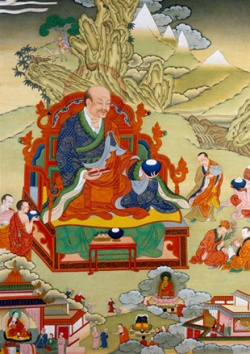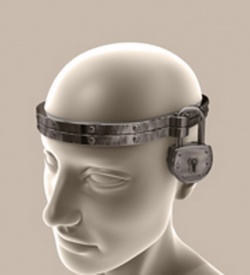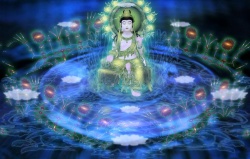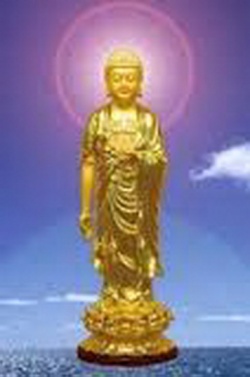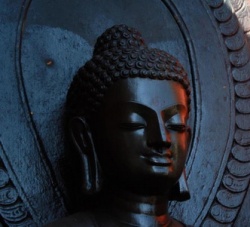Sambhogakaya - 5 Wisdoms and Buddha families
You may say: what you just described above is all good, its good Dharmakaya is there, but it is just an enlightened state, emptiness, often described as formless body. So what use we can make of it being there?
Dharmakaya is an enlightened mind, a pure essence or source of everything. But we can get to know about it from 2 other, this time called “form bodies” – Sambhogakaya and Nirmanakaya, sometimes roughly translated as “body of enlightened speech” and “body of enlightened, purified body” – but only very roughly, with such definitions I couldn’t tell what it means even a few years after I read them.
Sambhogakaya can be translated as “the body of perfect enjoyment”. “Sam” means perfect, “bhoga” means enjoyment and kaya is roughly translated as body.
Sambhogakaya can be understood as “the body of teaching”, but not really in the sense of some doctrine or speaking. Speaking in sense of physical act would be the sphere of physicality or Nirmanakaya.
Here we mean rather some teaching or wisdom that is intrinsically contained in the body of enlightenment and becomes evident in its completeness only to enlightened beings.
It’s not a doctrine to copy and paste, but rather manifests symbolically or through intuition or revelation.
Tibetan Buddhism sums it up that Sambhogakaya is expressing itself through inner wisdoms or jnana and there are 5 of them:
1.Dharmadhatu Wisdom (“perfect knowledge of all things as they manifest.”)
2.Mirror-like Wisdom.
3.Wisdom of Equality
4.Discriminating Awareness Wisdom
5.All-Accomplishing Wisdom
These 5 wisdoms are manifestations of all-encompassing dharmakaya, the nature of enlightenment.
They are manifestations of our own enlightened Buddha mind in form of 5 wisdoms.
In Mahayana and Vajrayana Buddhism they are symbolically represented as Dhyani Buddhas, manifestations of Sambhogakaya. They are respectively:
1.Vairocana - The central Buddha of Dharmadhatu Wisdom
2.Akshobya - The eastern Buddha of Mirrorlike Wisdom
3.Ratnasambhava or Rinchen Jungnay in Tibetan - the Buddha of the southern direction, The Wisdom of Equality
4.Amitabha or Opagme in Tibetan - The western Buddha of Discriminating Awareness Wisdom
5.Amogha Siddhi - the northern Buddha of All Accomplishing Wisdom.
These are the 5 main Sambhogakaya Buddhas or 5 inner wisdoms.
Each one of them can later take many other forms or manifestations or manifestations of sub-qualities.
And as we meditate on them, we come to deeper and deeper realization of them, identifying ourselves with them, we realize our enlightenment, Dharmakaya, which is not different from Tathagatagarbha – our true enlightened nature or “Thus-ness”.
Although they can manifest in many different forms, at the end of the day we realize that they represent our own enlightened wisdoms and qualities, and are not separable from us.
Dharmakaya as the absolute enlightened nature or emptiness is formless, but its manifestation in Sambogakaya in its completeness is represented in Tibetan Buddhism by Vajradhara (Tibetan.
Dorje Chang) or Samantabhadra (if you adhere to Nyingma tradition) – it can manifest itself only through means of Sambhogakaya wisdoms and enlightened activities in its Nirmanakaya form.
Sambhogakaya manifests itself not in some particular physical place, but in a place called Akanishtha.
Akanishtha is the all-encompassing land of ever present enlightened and pure emptiness.
It is said the teacher who manifests Sambhogakaya in the place called Akanishtha is the Nirmanakaya Vajradhara, and he embodies not the ordinary teachings of the three yanas, but the most essential teachings of supreme Tantrayana that are always meaningful regardless of the historical situation.
The audience to this level of teachings would be only realized advanced beings.
But for more ordinary beings who are not enlightened and cannot communicate directly with Vajradhara in Akanishtha five wisdoms are manifesting as 8 consciousnesses:
1.6 consciousness correspond to 6 āyatana consciousnesses as these:
eye consciousness,
ear consciousness,
tongue,
nose,
touch consciousnesses and
mind consciousness that unites them together.
2.Emotional Consciousness (dealing with self-grasping and disturbing emotions)
3.Alayavijnana ('kun-gzhi' in Tibetan) - the ground of mind.
Sometimes translated as 'subconscious storehouse' – all impressions are stored here:
our good karma,
bad karma, and
neutral karma.
All kinds of habits and whatever actions we perform during our lifetimes are registered there.
This is why it is known as a 'storehouse'
Alaya is a consciousness, but it is very subtle.
And when we think how exactly are these 8 consciousnesses transformed into 5 wisdoms, Buddhist scholars say:
1.Alaya, represented by ignorance, transforms into the wisdom of dharmadhatu (Vairocana, “perfect knowledge of all things as they manifest.”)
2.Alaya consciousness, represented by disturbing emotion of Anger, transforms into mirror-like wisdom (Akshobhya)
3.Emotional consciousness, represented by Pride, transforms into wisdom of equality (Ratnasambhava).
4.Mental consciousness, represented by desire also called attachment, transforms into the Discriminating Awareness Wisdom (Amitabha)
5.Five sense consciousnesses, represented by jealousy, which is a hindrance for both material and spiritual success, transform into the all-accomplishing wisdom (Amoghasiddhi).
In order for Sambhogakaya wisdoms to manifest should 5 Auspicious Coincidences to fulfill:
1.Right Place – which means Sambhogakaya manifests in the place of Akanishtha.
2.Manifestation of the teacher - the Buddha in his Nirmanakaya (“physical”) aspect.
3.Manifestation of the Sambhogakaya teachings as pure tantric manifestations.
It means the teacher communicates these teachings not in terms of written scriptures but in terms of meaning.
If practiced or realized, these essential teachings can deliver a person to the state of enlightenment in one lifetime.
4. Assembly of a proper audience of bodhisattvas, dakas, and dakinis--those who are advanced on the path.
5.Time.
From the Sambhogakaya perspective, unlike the Nirmanakaya perspective, past, present, and future are simultaneously embodied in the teachings.
For instance, in his Nirmanakaya aspect the Buddha taught the Four Noble Truths, the Eightfold Noble Path, and so on.
Because we can say that these Buddhist teachings began at a specific time, we might also speculate about when Buddhism might cease to exist. But the Sambhogakaya teachings are ever present and therefore unceasing.
Not every wisdom or teacher you might have will be a Sambhogakaya teacher.
Sambhogakaya teacher has to have a certain qualities, called 7 Limbs:
1.The Sambhogakaya aspect is fully immersed in Mahayana teachings.
2.The limb of coexistence, which means that because the Sambhogakaya is never corrupted, it manifests in conjunction with wisdom.
3.The limb of fullness, which means that the Sambhogakaya aspect is full of truth, completely steeped in truth.
4.The limb of nonsubstantiality, because the manifestation of the Sambhogakaya is lacking in inherent existence.
5.The limb of infinite compassion, for the Sambhogakaya aspect is fully imbued with compassionate concerns and it directs its attention toward other sentient beings.
6.The limb of non-cessation, which means that the resonating concern for other sentient beings is ever present and therefore unceasing.
7.The limb of perennial manifestation, which means that the Sambhogakaya cannot cease to be, but has manifested throughout the ages. There is no such thing as Sambhogakaya ceasing to exist in the way that the Nirmanakaya is withdrawn when the Buddha enters paranirvana.
The Sambhogakaya can be characterized by 8 powers of realization:
1.The power of the body. It is said that the power of the body becomes such that all things of samsaric and nirvanic nature become completely subdued and one is able to take full charge of them. Along with this power, one is enriched with many positive qualities.
2.The power of the verbal capacity or speech. In this case the capacity of speech or communication is such that all the essential verbal elements of both samsaric and nirvanic qualities become assimilated, and one is able to make full use of them.
3. The power of the mind in relation to both samsara and nirvana becomes assimilated and integrated, and one becomes empowered with all the different possibilities of mental manifestation.
4.The power of miracle, whereby the person's capacity of expression is such that he or she is not confined by the three gates of body, speech, and mind, but is able to go beyond conventional modes of expression, thus being able to display his or her power in unusual ways.
5.The Power of Activity. One is constantly being impelled toward action, toward the intention to act and to accomplish things for the benefit of others. So in terms of doing, or acting, one becomes fully endowed with varieties of powers related to samsaric and nirvanic qualities.
6.The power of place. This means that the Sambhogakaya is situated in Akanishtha, which is basically the sphere of reality.
One becomes enriched and empowered in this sense because Sambhogakaya is inseparably united with reality, and all the powers related with that can manifest.
7.The power of sensuality. This is connected with the idea that Sambhogakaya is inseparably in unity with its female counterpart, Wisdom, whether one calls that the mother of all Buddhas or the selfless one, Dag mema--or whether one calls it Vajravarahi or Vajrayogini.
Whatever one might call it, the female counterpart is continuously in unison with the Sambhogakaya, and this experience continuously produces the great bliss of unity, which is the Mahamudra expression as well.
Finally, one is empowered by the capacities to manifest prajna or sherab.
8.The Power to fulfill one's wishes.
Sambhogakaya is intrinsically endowed with all the worldly and supramundane boons.
A worldly boon, or loka siddha, is the capacity to work with one's extrasensory capacities, such as clairvoyance, clear audience, telepathy, and so forth.
The loka siddhi are the supernormal powers of different spiritual realizations.
When one becomes empowered and enriched by these eight types of empowerment, as well as the seven limbs discussed earlier, one reaches the state called Vajradhara, or "the holder of the vajra."
The vajra symbolizes eternal truth, and dhara, or holding, means that one's mental continuum of Sambhogakaya is never separated from the ever present capacity to be in tune with reality.
For that reason Vajradhara is the symbolic representation of the Sambhogakaya.
